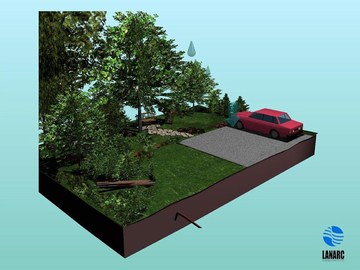Greater Vancouver Region Develops Design Guidelines for Absorbent Landscapes
Goal is to reduce rainwater runoff volume by capturing rain where it falls

To complement the Water Balance Model for Brtish Columbia, the Stormwater Inter-Agency Group (SILG) – a technical committee of the Greater Vancouver Regional District (GVRD) – commissioned a research project to create Stormwater Source Control Design Guidelines 2005 – Final Report. This work is based on the adaptation of design standards from areas of Europe, Australia, New Zealand and North America with similar climatic and soil conditions. For the complete story, please click here.
“The objective of this project was to reduce information barriers that previously stood in the way of effective implementation of rainwater source controls in the Georgia Basin region of British Columbia. Our focus was on the technical details of practices in landscape areas that treat rainwater through plant materials and soils by infiltration, retention, detention and evapotranspiration', according to Ed von Euw, Senior Engineer with GVRD Regional Utility Planning.
Absorbent Landscapes
In British Columbia, the technical language is being simplified so that there will be a clearer public and practitioner understanding of the suite of source control options for capturing rain where it falls. Six simplified categories have been defined, of which Absorbent Landscapes is one. Key points to note with resect to Absorbent Landscapes include:
- Most landscapes – either natural or manmade – act like a sponge to soak up, store and slowly release rainfall.
- Absorbent Landscape needs to be implemented to avoid conditions that would cause reduced infiltration at the surface.
- Site plans that drain large areas of impervious area into small areas of landscape risk overwhelming the absorbent capabilities of soil.
- To meet performance targets, developments need to ensure that the amount of impervious area on a site or in a drainage basin is balanced with the amount of impervious areas.
Key features of the research information have been displayed in a set of poster presentations. To download the poster for Absorbent Landscapes, please click here.
The combination of the Water Balance Model and the Design Guidelines enable engineers, planners, landscape architects, architects, developers and builders to select, assess and implement landscape-based solutions that make sense.
Posted August 2006

